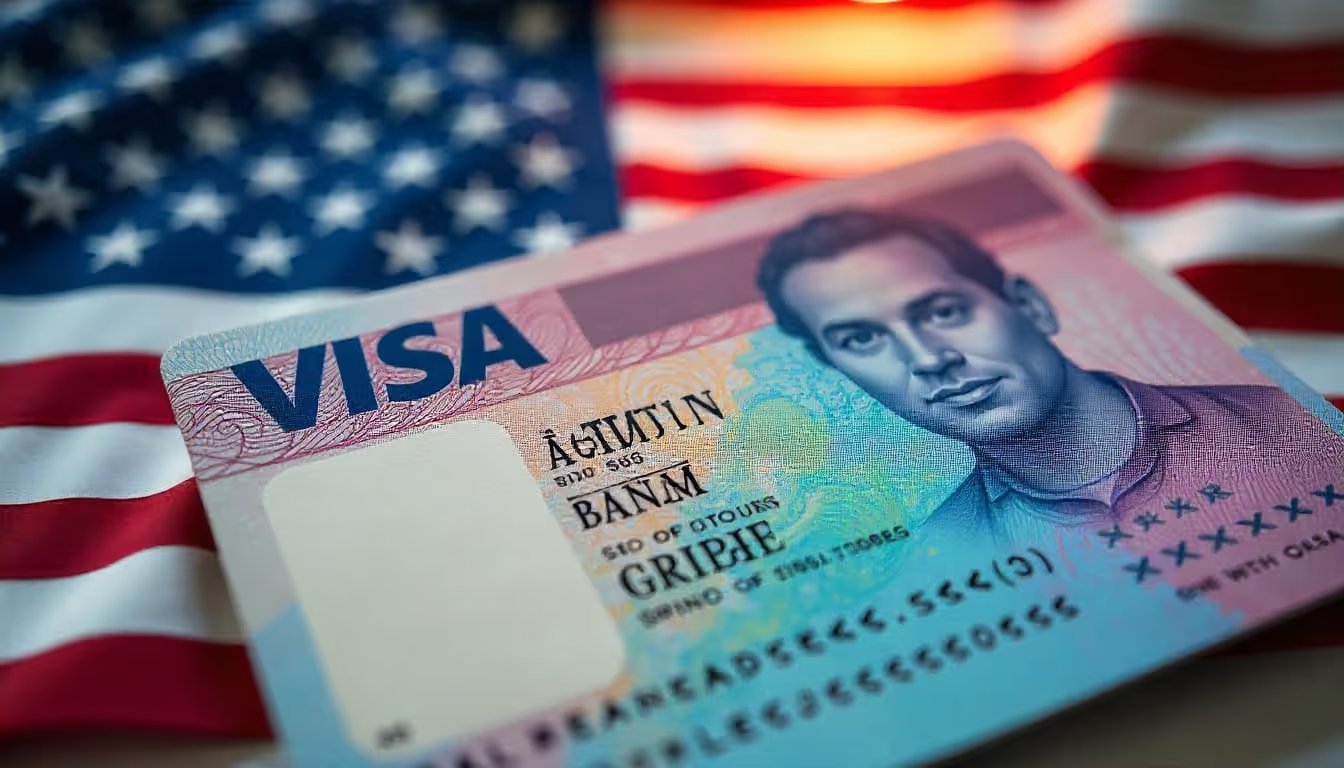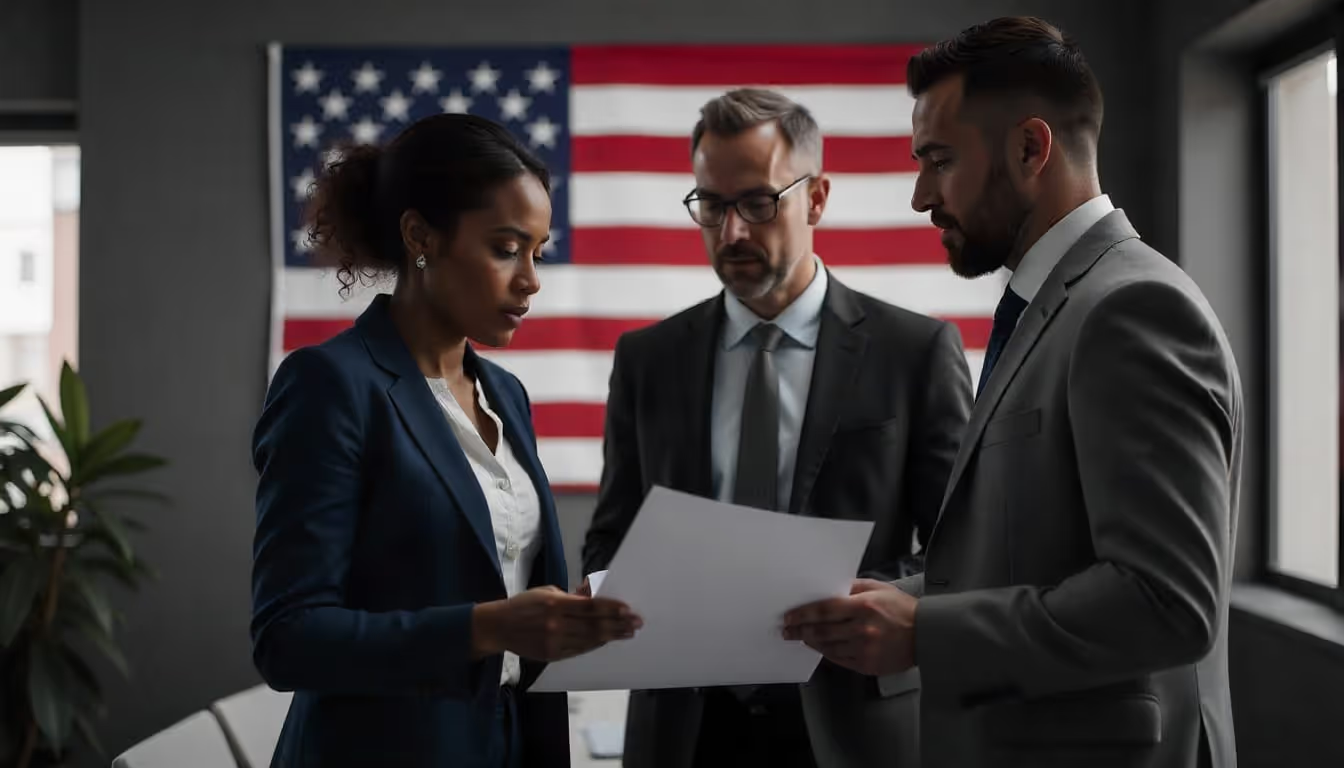.png)
.png)
Confused about U.S. work visas? This guide answers the most common Reddit questions on U.S. work visa types, processing times, eligibility, and switching statuses with expert-backed insights.
.avif)
When it comes to immigration, Reddit often serves as a place where people share real-life concerns, confusion, and experience. And if you’ve searched for work visa questions, chances are you’ve landed on one of these Reddit threads.
So, we’ve gathered the 16 most frequently asked questions on U.S. work visas—from eligibility to timelines—and explained them in plain, friendly language.
A U.S. work visa is an official authorization that allows foreign nationals to legally work in the United States. Almost anyone who isn’t a U.S. citizen or green card holder and wants to work here needs one.
Common types include the H-1B, L-1, O-1, and TN visas—each tied to job roles, qualifications, and nationality.
Not sure which visa applies to your case? You can always get tailored advice from Beyond Border.
The H-1B visa allows U.S. employers to hire foreign professionals in specialty fields like IT, finance, engineering, or science. But there’s a catch: there’s an annual cap and a lottery.
Here’s how it usually works:
With limited spots, it’s crucial to time things right. Beyond Border can help your employer or sponsor with the entire process.
Learn more about this on USCIS page

Yes, many international students in the U.S. follow this path.
The usual route is to use OPT (Optional Practical Training) or CPT (Curricular Practical Training) after graduation to gain work experience. Then, you or your employer can apply for a H-1B visa or other work visa.
But timing is critical—you must ensure there's no gap between OPT and your new visa.
Beyond Border can help you make the switch legally and efficiently.
Both are work visas—but for very different profiles.
O-1s don’t go through a lottery and offer more flexibility—but the bar for proving "extraordinary" is high.
If you’re unsure which one suits you, Beyond Border can help analyze your background.
In most cases, no. Almost all U.S. work visas require employer sponsorship.
Exceptions like O-1 visas and self-petition green cards (EB-1 or EB-2 NIW) might offer alternatives if you meet high qualifications.
If you’re looking for job-linked pathways, Beyond Border can match you with sponsoring employers or evaluate your self-petition eligibility.
The L-1 visa is for intra-company transferees—employees of international companies relocating to the U.S. office.
Unlike the H-1B, there’s no annual cap for L-1 visas. But your company must meet specific criteria (qualifying relationship and continuous employment abroad).
For growing startups or global firms, L-1s are ideal. Get your company's eligibility checked with Beyond Border.
Processing time depends on the visa category, the country you're applying from, and whether premium processing is used.
For example:
You can check wait times on the USCIS website, but if you want an accurate timeline, Beyond Border can provide a visa-specific estimate.
Yes—this is called dual intent.
H-1B and L-1 visas allow you to pursue a green card while still maintaining your nonimmigrant status. Other visas like TN or O-1 don’t officially allow dual intent (though there are strategies to work around that).
This transition is complex. Beyond Border can guide you step by step.
A denial can feel like a setback, but it's not the end.
Depending on the reason, you might:
Avoid the trial-and-error route. Let Beyond Border review your case and suggest the best recovery strategy.
Yes. Most work visas have dependent visas attached.
For example:
Some spouses (like H-4 with EAD) can even work in the U.S. Learn your family’s options with Beyond Border.
Only under certain conditions.
If you're already in the U.S. and your change-of-status or extension is pending, leaving the country might cancel your application.
Always speak to an immigration expert like Beyond Border before international travel during visa processing.
Requirements vary, but typically include:
Supporting documents must be accurate and organized. Beyond Border can help you compile everything correctly.
Yes, but the process differs by visa type.
For H-1B, you can change employers through a portability transfer—the new employer must file a petition. For L-1, you typically can’t switch without leaving the U.S. or applying for a different visa.
Make job transitions smoother by consulting Beyond Border.
Students often use these as stepping stones to a longer-term work visa. Plan your OPT or CPT strategically with help from Beyond Border.
Yes—but they’re not typical work visas.
Options include:
If you’re a startup founder or creator, get personalized visa planning from Beyond Border.
That would be the O-1B visa, designed for individuals with exceptional achievement in the arts, film, or media.
To qualify, you must show evidence of awards, critical reviews, press coverage, or international recognition.
Don’t stress over what counts as “extraordinary.” Beyond Border has helped hundreds of artists qualify.

Reddit gives you community stories—but when it comes to something as important as your career and immigration status, you need accurate advice, not guesswork.
If you're feeling stuck or just unsure what to do next, let Beyond Border help you confidently navigate the U.S. work visa process.